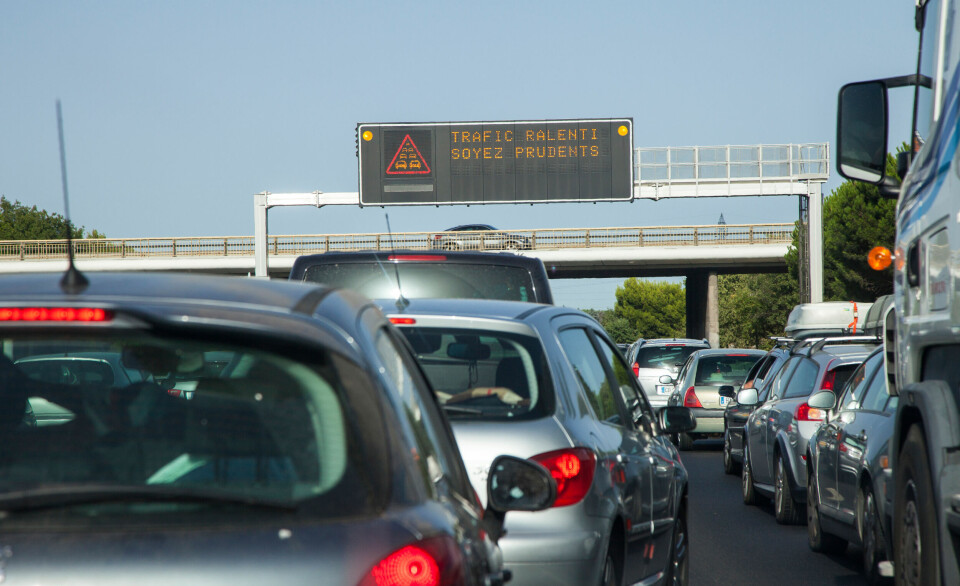-
Cold Christmas in France, but little chance of snow
High-pressure system will move into France from north-east at the start of next week
-
British ‘Puppet Master’ conman in French jail wins phones back on appeal
Robert Hendy-Freegard was given a six-year sentence after hitting two gendarmes with his car
-
Alleged British hacker in jail in France offers to help with police data breach
Recent attack targeted police files
Notre Dame one year on from the great fire
The building remains in an "absolute emergency" state says the team working on its restoration
On April 15, 2019, fire engulfed Paris's Notre Dame Cathedral. Today, with France locked down by coronavirus, restoration work has been halted.
The blaze, which was reported shortly after 18:00 on that day, started in an area of the roof where work was being carried out, firefighters said at the time.
Read our report from the day: Notre Dame on fire
The main structure of the cathedral, along with both towers, were saved, along with the major pieces of art contained inside. However, two thirds of the roof was damaged and collapsed, along with the famous spire.
It is believed smoke alarms on the scaffolding during multi-million-euro restoration work on Notre-Dame’s spire did not go off
One year on, the building remains in "absolute emergency" according to the restoration team. Winter weather had already forced delays, but work to dismantle the fire-twisted scaffolding was due to start this Spring, at least until the country went into confinement.
A crane looms over the site; a steel barrier surrounds it. But work had started. A four-month operation involving workers on ropes, like mountain climbers, had been under way. It has been halted for the moment, but General Jean-Louis Georgelin, a former Armed Forces Chief of Staff charged with restoring the 800-year-old building, is reportedly considering reopening the work site to allow them to return.
Read more: Notre-Dame: 856 years of French history
An Easter 'service' held behind closed doors and broadcast on television showed that the nave had been cleared of rubble. But the debris above the vaulted roof still has to be removed. It is planned that most of this work will be completed this summer, while the dismantling of the great organ for cleaning will take place between now and 2024.
General Georgelin has insisted that the work will be completed within the five-year timescale set by President Emmanuel Macron in the days after the fire, even if the work is currently stalled. The restoration phase 'should begin in 2021', he told Franceinfo, adding a Te Deum will be celebrated in the Cathedral on April 16, 2024.
Consolidation work on the vaults and cleaning work on two chapels, under the guidance of chief architect Philippe Villeneuve, should be finished in the autumn, the General said.
Questions remain over the work to come, from design to material. A strong lobby favours reconstructing the roof in oak - which had been used throughout the cathedral's 800-year history. But some have mentioned more common modern building materials, including concrete and steel.
Nearly a year ago, President Macron suggested the restoration could include a 'contemporary architectural gesture'. But Villeneuve wants the restoration to be faithful to the preserved 19th-century plans of Viollet-Le-Duc, who added the Gothic spire that collapsed spectacularly, surrounded by flames, on April 15, 2019.
According to Franceinfo, most French people agree with Villeneuve. Unesco, which had labelled Notre Dame a World Heritage Site, may approve. It seems suggestions for a glass spire, or a rooftop organic garden are not up for serious consideration.
Read more: Lucky timing saved Notre Dame statues
Early costs had spiraled due to unforeseen circumstances, including the risk of lead poisoning, but that concern appears to have largely subsided. Shortly before coronavirus shut everything down, the lights were all green for the square outside Notre Dame to reopen at Easter.
Most of the lead in the square had been cleared by a high-pressure wash. What remains is the application of a transparent resin, which has been delayed by confinement.
At least there are no financial concerns for the restoration work. Every cent of the €902million pledged by individuals rich and poor, businesses large and small, would be needed, General Georgelin said, defending the sum needed to restore a single building.
Read more: Notre-Dame fire: Bees on roof survived, beekeeper says
None of it will be diverted to other French buildings in need. And he has thanked the 340,000 donors who came forward in the days and weeks after the fire.
A 2019 law to finance the reconstruction of Notre Dame will also finance training in necessary crafts that - once the work in Paris is complete - can be used to restore and rebuild other French heritage sites.
The public institution set up to rebuild the cathedral has also been tasked with rebuilding these craft sectors. Near Notre Dame, a "crafts village" may be set up during the restoration period, with exhibitions and workshops.
Read more: Paradise Lost and Found in the Notre-Dame fire
There's a vision, too, for the redevelopment of the Ile de la Cité, which attracts some 13million visitors every year, 2020 notwithstanding. A 2016 report - which prompted fears of over-commercialisation of the area - recommended development of Square Jean XXIII, the southern promenade and the Hôtel Dieu.
Any redevelopment would usually fall under the aegis of the City of Paris, but the public body in charge of the cathedral restoration may be entrusted with it, taking its responsibilities beyond the five-year work period.
Read more: Notre-Dame fire: Artists pay homage
Meanwhile, the investigation into the fire is ongoing. No official cause of the fire has yet been publicly identified, though terrorism and foul play were ruled out in a preliminary investigation by the Paris Public Prosecutor's Office.
























